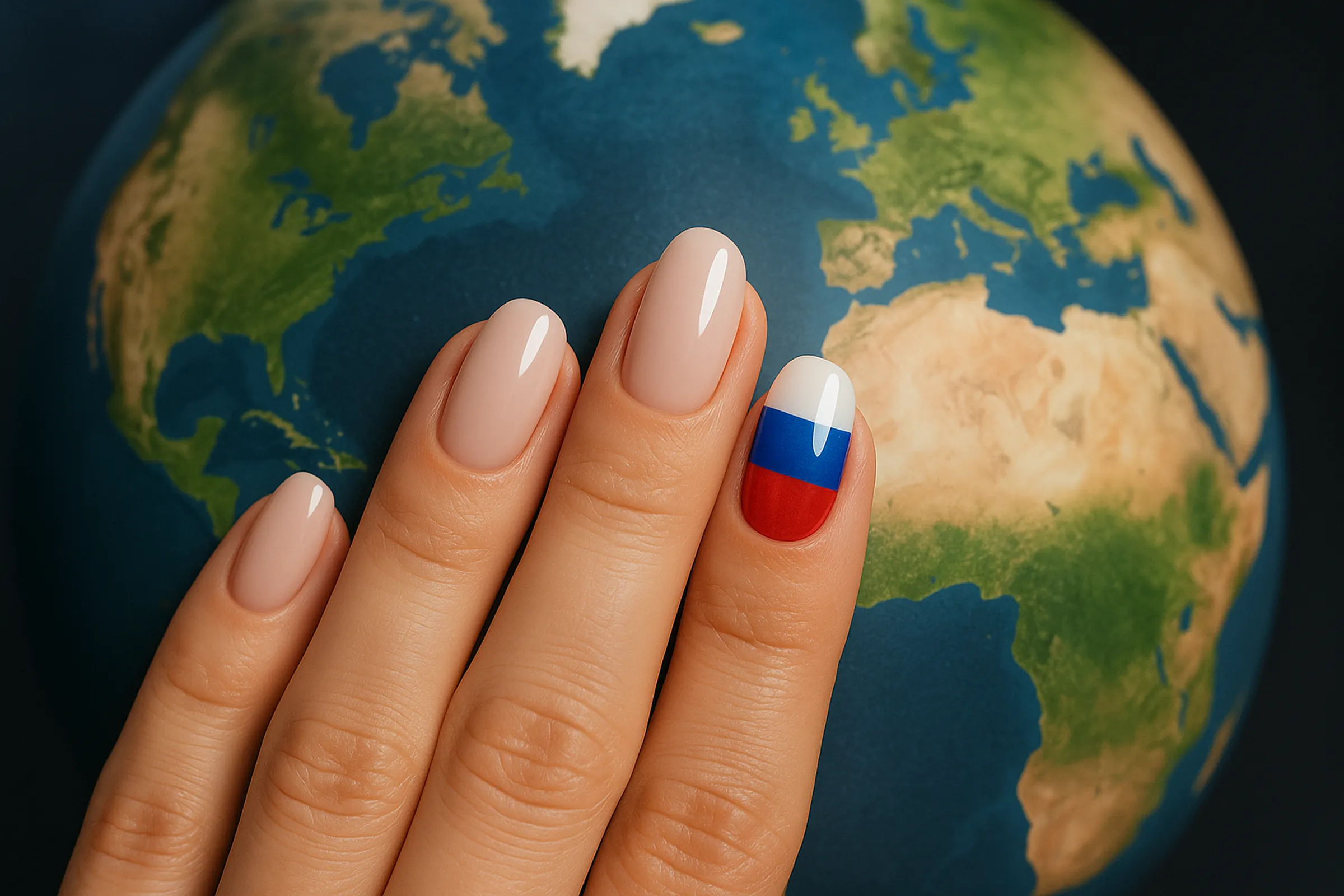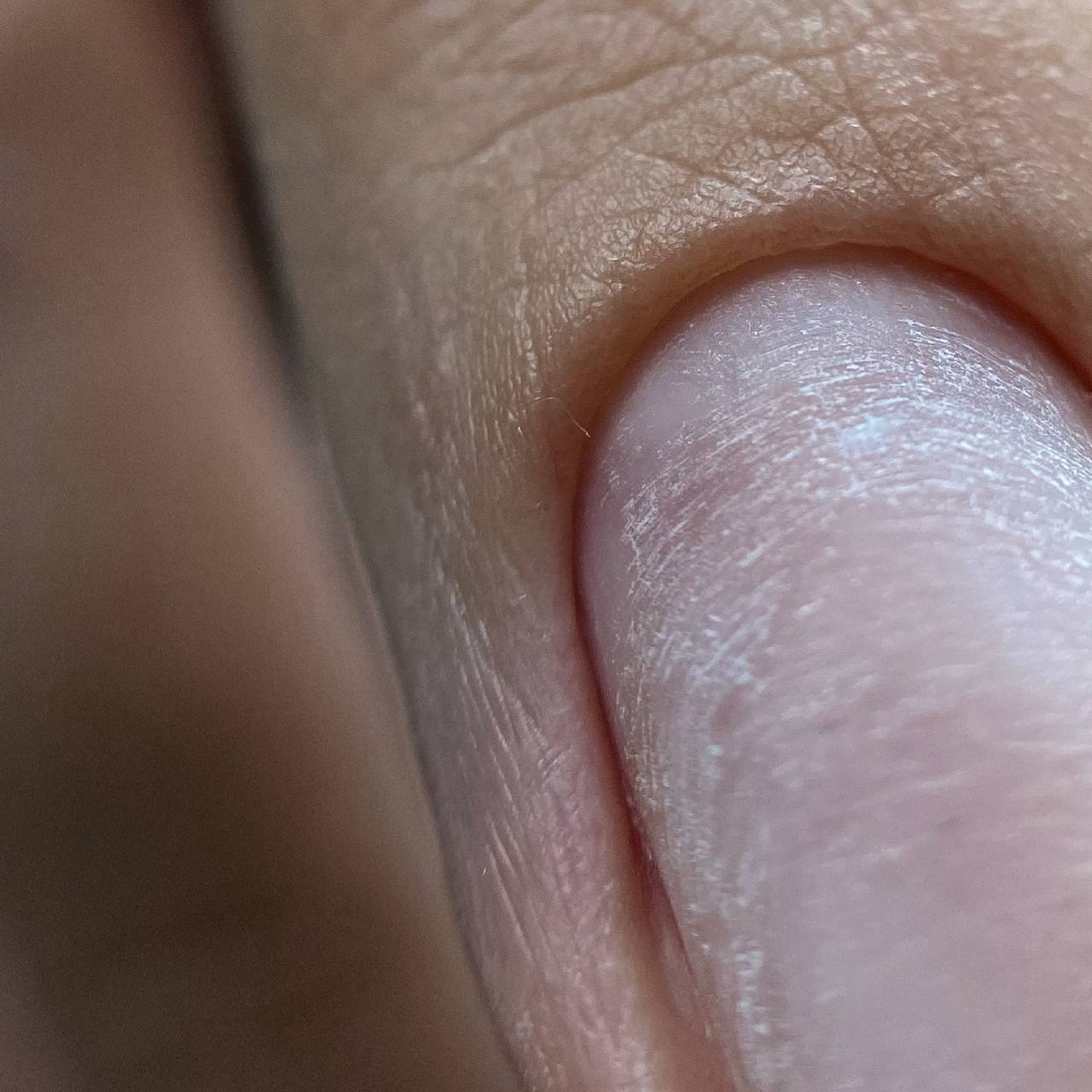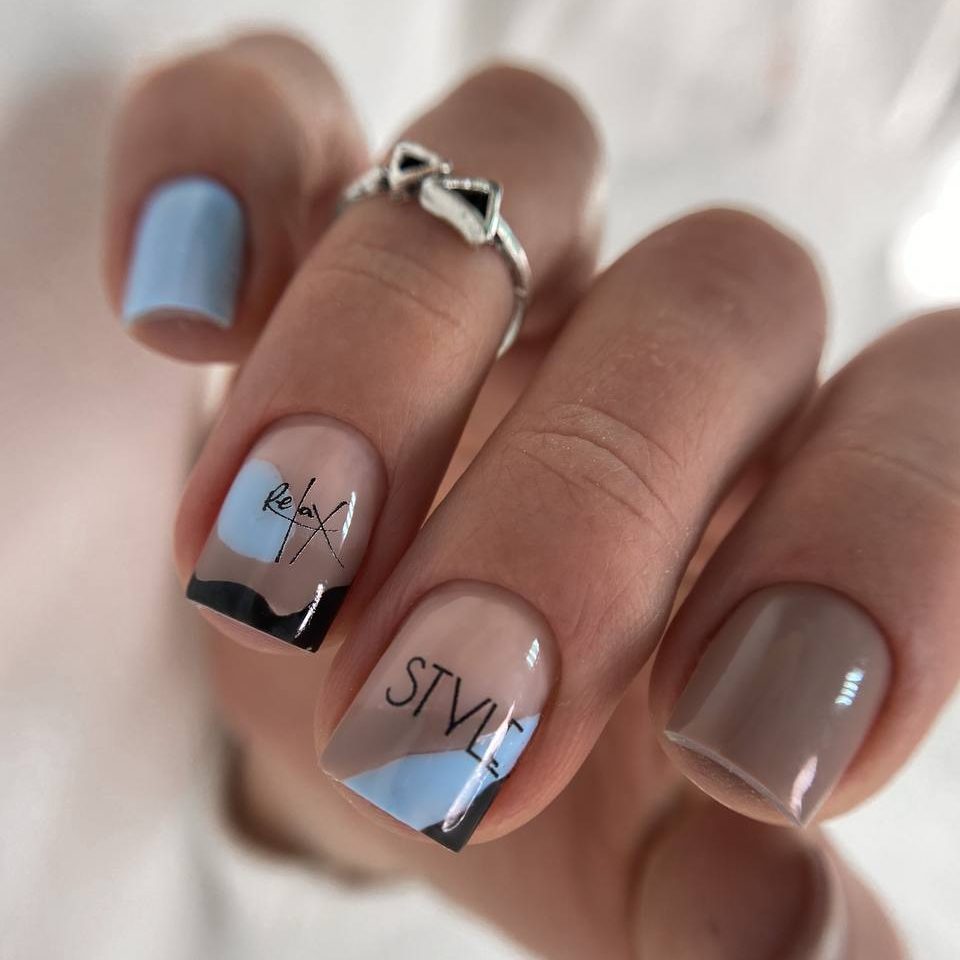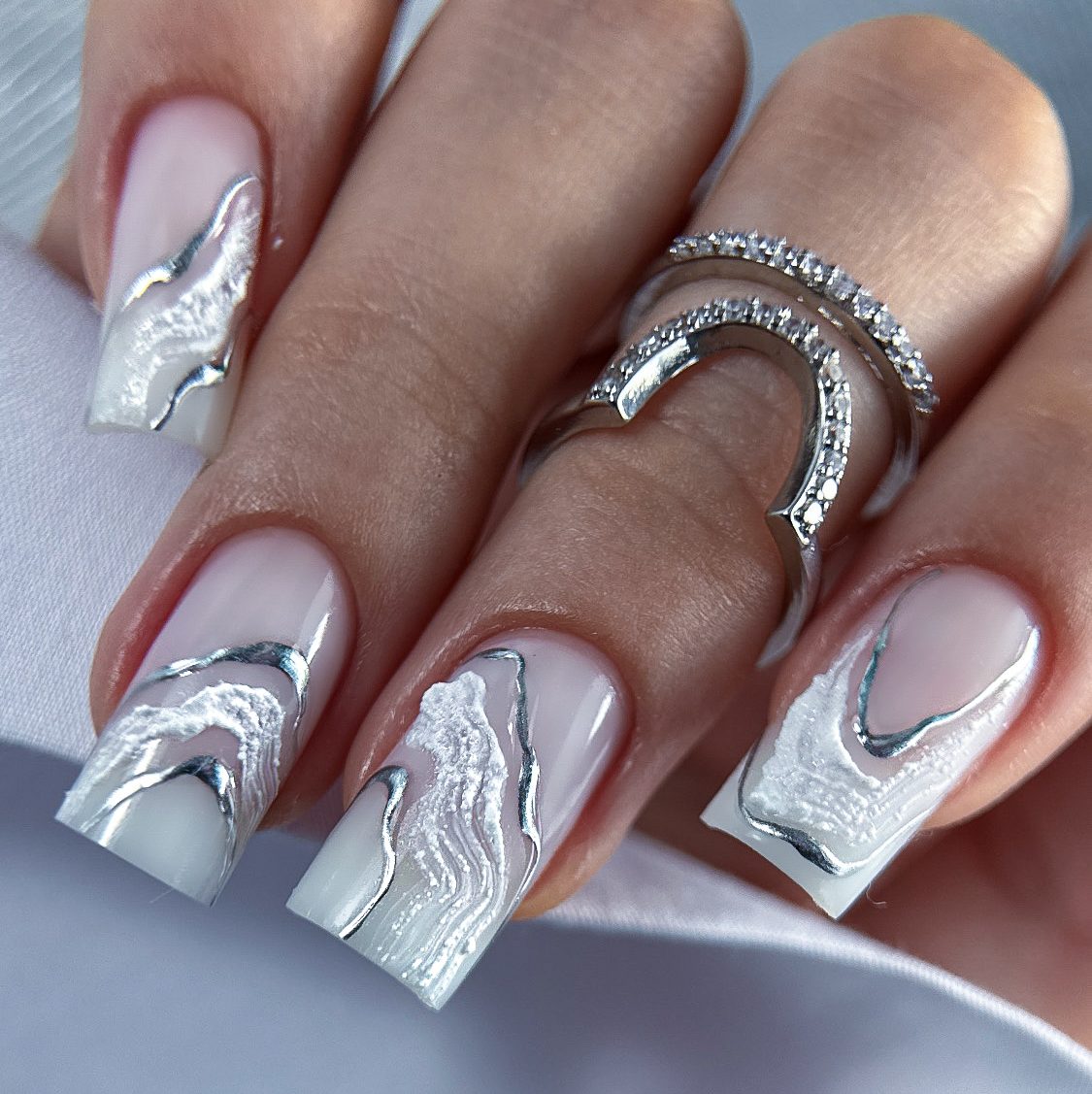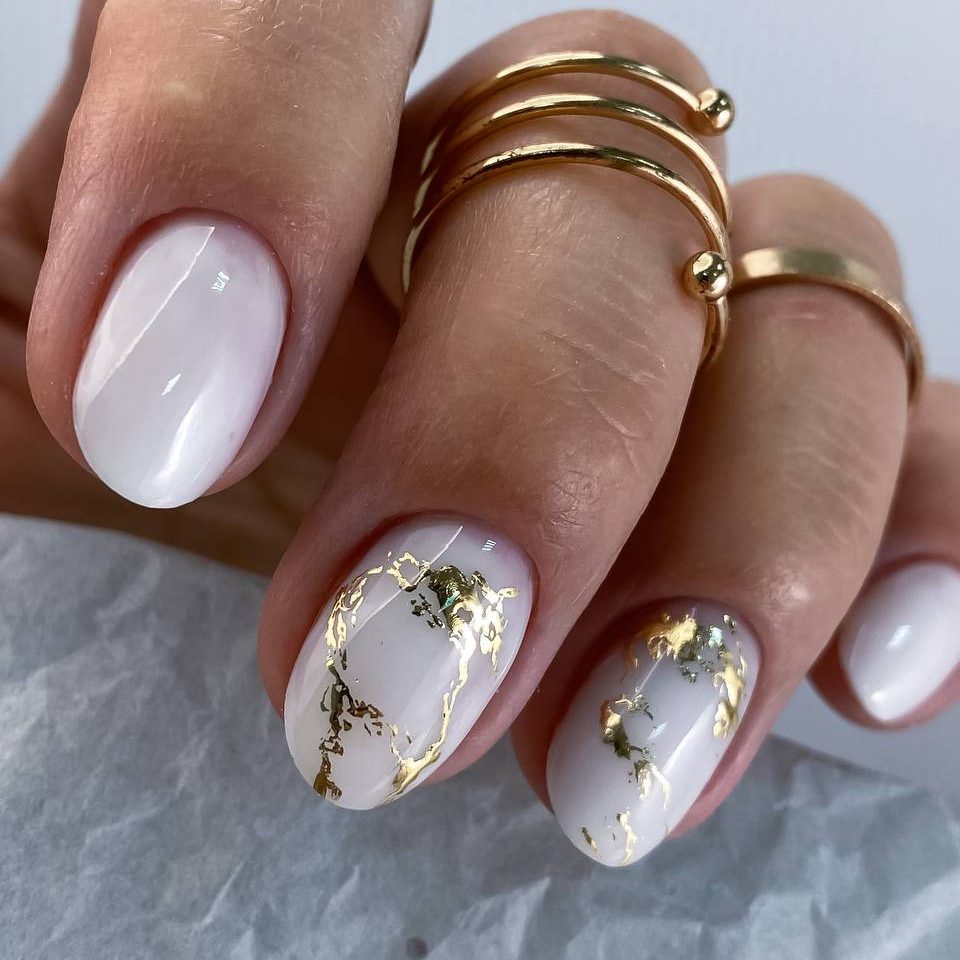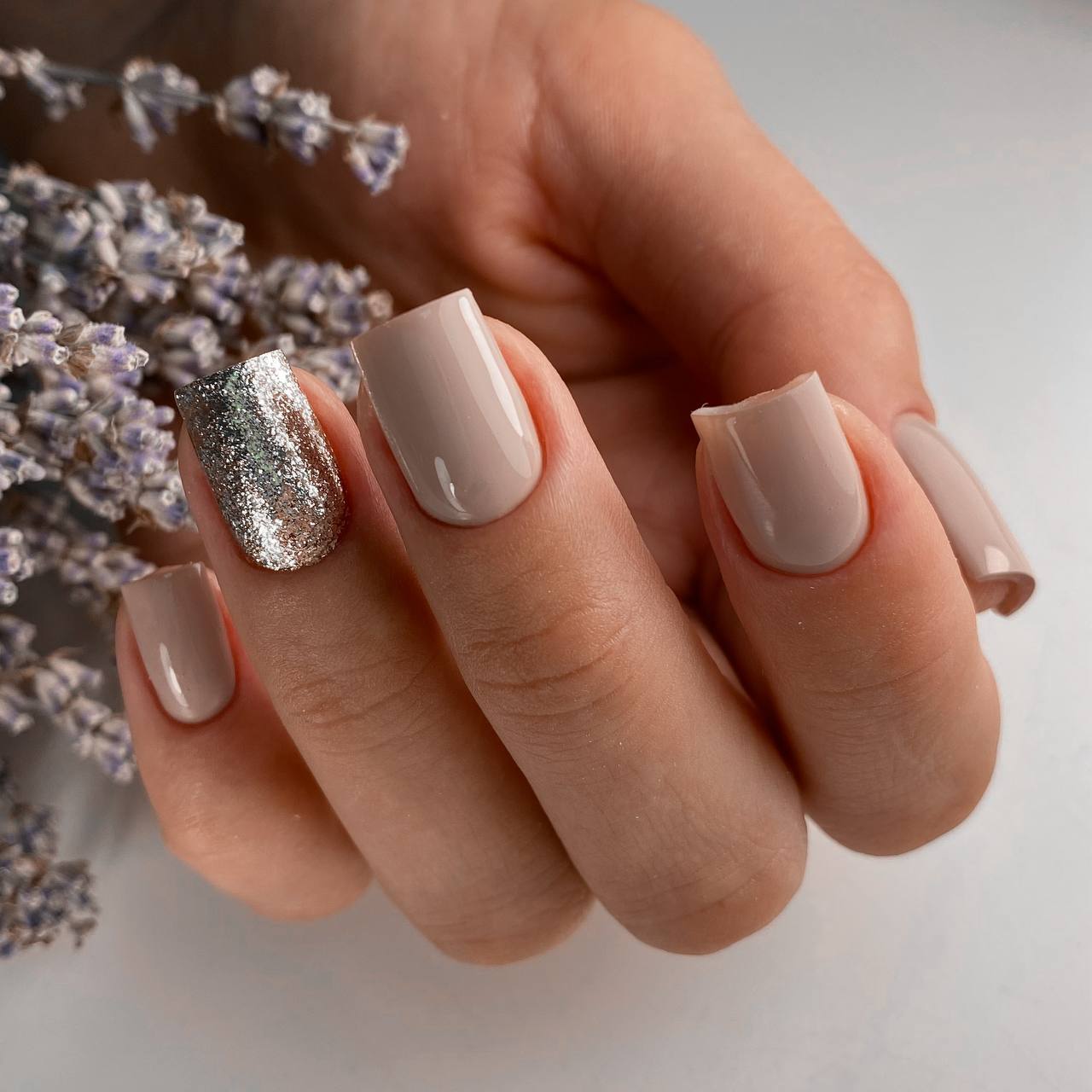Spread and Trendiness. The term “Russian manicure” is increasingly heard outside of Russia: this technique has become a sought-after trend in the USA, Europe, and even in some Asian countries[1]. Since early 2022, Russian manicure has turned into one of the hottest trends in the beauty industry[2]. Western glossy magazines write about it, it is praised on social media, and among the fans of manicure à la russe are world-class stars — for example, Kendall Jenner and Hailey Bieber[2]. In Italy, for example, Vogue magazine published an article with expert commentary on the Russian manicure technique, while on TikTok, a video of an American woman amazed by the quality of services in a Russian-speaking salon in New York went viral[3]. Under the hashtag #russianmanicure, there are already hundreds of thousands of posts where women from all over the world leave enthusiastic reviews[4]. As a result, waves of interest in the pros and cons of Russian manicure periodically flare up in the foreign press.[5], and bloggers call it “elite”[6]. Countries and Regions. Originally, the technique emerged in Russia and post-Soviet countries, and today it is widely practiced by nail technicians from Russia, Ukraine, Belarus, and other Eastern European countries all over the world[7][8]. Russian manicure is especially in demand in the USA and Western European countries, where local clients have noticed the difference in quality. For example, in the USA, Russian-speaking nail technicians have become fashionable: Hollywood celebrities trust them with their nails, and quite often it is Russian specialists who are responsible for the manicures of top stars[9]. Thus, nail technicians from Russia do the manicures of Kendall Jenner and Hailey Bieber (through their representative Lisa Kon), which has attracted the attention of both Russian and international media[10]. In Western Europe, Russian-speaking nail technicians are also valued like gold. According to emigrants, in France and the Netherlands, manicure services from Russian specialists are in great demand, and the quality is markedly different from the local one[11]. For example, in the Netherlands, a high-quality “Russian” manicure + pedicure can cost around €120 — expensive even by local standards — yet emigrants are willing to pay for it, since local salons offer services for €15–30, but of such low quality that it is sometimes unclear whether the manicure was done before or after[12][13]. After local women try the Russian technique and compare the results, many agree to pay more: Dutch women, for example, are quite particular about their appearance, and after experiencing a perfectly executed manicure from Russia, they usually get “hooked” on it[14]. Perception Abroad. Outside Russia, Russian manicure was long considered a niche luxury service, but today its reputation is growing everywhere. Clients note that it looks more aesthetic and lasts longer, and in terms of wear time, it even turns out to be more cost-effective than the regular manicure.[15]. In the comments, American clients express admiration: Russian nail technicians can precisely replicate any design from a picture and perform the work flawlessly[16]. Many, after trying it once or twice, say they will never return to a regular manicure[6]. Nail technicians in the West themselves compare the meticulousness of Russian manicure to the work of a surgeon[4]. At the same time, there is also skepticism: some of the Western audience are initially surprised by the length of the procedure (“two hours sounds like torture” — some joke)[6], and some react warily to the word “Russian” in the name. However, thanks to word of mouth and social media, interest is spreading even among native residents of those countries where historically manicure was not considered something special[17]. Experts note that the younger generation of American women is now deliberately seeking out Russian salons and technicians, despite the traditional conservatism of the market (in the USA many women have gone to the same salon for years out of habit). Overall, Russia is now setting trends in the nail industry: for example, the currently popular practice of applying gel polish “under the cuticle” originally appeared in Russia and is now in huge demand all over the world. The Essence and Difference from Other Approaches. Under the name “Russian manicure” in the West, what is primarily meant is the e-file dry manicure — that is, the treatment of the nail and the surrounding skin using an electric drill (e-file) without soaking the hands. The key principle is the complete removal of the cuticle and pterygium (the thin dead layer under the cuticle), along with the meticulous buffing of the nail plate and the folds around it for perfect smoothness. The procedure is performed on dry skin: unlike the classic manicure, the fingers are not soaked in water, and softening (if needed) is achieved with special removers or sometimes not done at all. The nail technician gradually and step by step treats each area: first lifting and removing the keratinized part of the cuticle with e-file bits, then buffing the skin around the nail, polishing the nail bed, and the sidewalls. Usually, several types of bits are used (with different shapes — cylindrical, ball-shaped, conical — and different levels of abrasiveness) at different stages. As a result, the nails and the skin around them become exceptionally clean, smooth, without any hangnails or buildup — creating the effect of a “new,” well-groomed nail plate. Tools and Materials. A distinctive feature is the active use of an electric drill (e-file) with diamond bits for cuticle removal instead of traditional manicure clippers[26]. At the same time, Russian manicure can also be performed in the classic way (with scissors and nippers), but the key principle is to remove all excess skin “to zero”[21]. The instrumental arsenal also includes fine scissors for trimming the cuticle (sometimes used after the e-file for a perfectly clean cut line) and various nail files for final buffing. An important point is the absence of water: dry treatment allows for more precise control over the amount of skin being removed and reduces the risk of cuts. Also, in the Russian approach, gel polish from the old coating is not soaked off in acetone with foil, as in the classic manicure, but is carefully filed off with the e-file, which saves time and reduces the nail’s contact with chemicals[8]. After preparing the nails, a special leveling base (for example, rubber or Acrygel) is usually applied, selected according to the length and condition of the nail[27]. The color coating is most often gel polish (shellac) for long-lasting results[28]. that the regrown edge remains invisible for as long as possible[29]. For curing, UV/LED lamps are used, just like in a regular gel manicure. Comparison of Manicure Techniques: The differences between the Russian, European, and Japanese approaches are presented in the table below: Why the Technique Is Unique. Unlike other schools, where the main focus is on nail shape or trendy design, the Russian approach emphasizes flawless cleanliness and nail health [38]. Technicians eliminate any imperfections — from rough skin to thin, peeling nail plates — achieving a perfect canvas on which the coating is applied evenly[39]. According to Kamola Malikova, owner of Minx Nails salon in Los Angeles, there is virtually no nail or skin problem that cannot be corrected with the “Russian” technique — which is why clients, once they experience it, rarely return to traditional manicure[40]. n addition, Russian manicure combines different methods (it is also called combi-manicure): e-file treatment can be combined with the use of scissors, and removal of the old coating can be done simultaneously with nail care. All this makes the procedure more complex, but also more effective. As a result, the outcome looks visually different: nails appear longer, neater, as if they have grown anew, and the coating lasts longer than usual[41]. The difference is so striking that in the USA clients described the effect as “cuticles? never heard of them” — a complete absence of visible cuticles and perfectly polished nails from the base, something impossible to achieve with the standard approach High Quality of Work. The Russian school of manicure has earned a reputation as one of the best in the world thanks to the combination of virtuoso technique and attention to detail. “Russian manicure has always been one of the most beautiful and clean. Nowhere else is so much attention paid to the beauty of hands as in Russia,” notes Ekaterina Muranova, chief technologist of the 4hands salon chain[9]. Indeed, in Russia, manicure has been elevated almost to a cult: clients are extremely demanding about the result, which is why technicians strive to provide the highest quality service[42]. As a result, such a manicure takes longer to perform, but it also lasts longer, looks neater, and the coating holds stronger than usual[9]. Thanks to nail buffing and the removal of all excess skin, regrowth does not occur quickly, and the fresh look is preserved for several weeks[43]. Even after a month, the regrown part looks neat, since the gel is applied under the cuticle and grows out smoothly without a visible line[29]. Many celebrities and models value this flawless look: nails appear perfectly groomed without retouching, which is important for photoshoots and public appearances[40]. A well-done manicure is also convenient in everyday life — nothing snags, cracks, or requires self-fixing[44]. Strict Sterility and Hygiene. One of the reasons why Russian manicure is considered safer is the high standards of tool sterilization adopted in Russian salons. In Russia, almost every salon, even budget ones, after each client, the tools go through three stages of disinfection and sterilization (in solutions, dry heat, or autoclave) and are stored in individual kraft packets, which are opened in front of the client[7][25]. Abroad, however, according to experts, this level of compliance is far from always observed: in Europe, it is rare to see a sterile packet with tools being opened in front of the client[7]. This means that Russian nail technicians take a more thorough approach to hygiene — partly thanks to the Soviet school of sanitary supervision, and partly due to the high competition for clients. E-file manicure also has inherent safety advantages: when used correctly, it is almost impossible to cut the skin (unlike with sharp nippers) [43]. In addition, the absence of preliminary hand soaking almost eliminates the risk of accidentally cutting off excess skin — since when the cuticle is steamed, it swells, the boundaries of the “excess” become blurred, and an inexperienced technician may injure live tissue. With the dry technique, this problem does not exist[45]. “With e-file manicure, it’s impossible to get a cut — that’s one. In addition, the e-file cleans the nail plate more thoroughly and does not injure the cuticle… if the procedure is done correctly and regularly, the cuticle then grows back more slowly, and the manicure can be worn longer,” explains nail technician Elena Milovanova [43]. She also notes that the absence of the need to soak the hands prevents the softening effect of the skin and thus reduces the likelihood of “cutting off too much”. Each tool used — whether an e-file bit, attachment, or nail file — undergoes mandatory sterilization after the procedure (most often in an autoclave with hot steam). Thus, the risk of infection is minimized: medical-grade disinfectants are used, and disposable items (nail files, buffers, orange sticks) are never reused[47]. An example of equipment and tools used in performing the “Russian” manicure. In Russian salons, special attention is paid to sterility: e-file bits, nippers, pushers, and other reusable instruments undergo multi-stage processing and are stored in sealed individual packets until use. Training of Nail Technicians. Training of Nail Technicians. Another reason for the high quality is the professionalism of Russian nail technicians. In Russia and the CIS countries, an extensive system of manicure training has developed: from numerous private schools to large training centers that regularly improve staff qualifications[16]. Many technicians continuously learn new things — taking advanced training courses every six months or once a year, mastering the latest technologies, materials, and designs. Such a background indicates a high standard of training. Unlike in many countries where manicure is seen as a simple service and training is limited to basic skills, in Russia manicure is considered an art that requires long practice and precision almost like that of a surgeon[49]. Many young women first start learning this “for themselves,” but eventually become world-renowned nail technicians[50]. Such is the story of Lisa Kon (Olesya Kondratyeva from Tver, Russia): she taught herself manicure by watching videos on the internet, and after moving to Los Angeles in 2017, she turned her hobby into a business empire[51]. Today she owns a successful salon in Hollywood, the Lisa Kon nail polish line, and a manicure school in California[52]. Such stories confirm that Russian nail technicians, thanks to their skill and entrepreneurship, raise the quality standards of services wherever they work. Comparison by Regions. The level of quality and the attitude toward manicure vary greatly across different countries. In Russia, client expectations are high, and salons compete in quality to satisfy a demanding audience [42]. In the West (in the USA and Europe), manicure was long perceived simply as a hygienic procedure, and many salons provided minimal-quality service — quick and cheap, but without thoroughness[53][11]. Below is a comparative overview of the manicure industry in Russia, the USA, and Europe: Restrictions and bans. The rapid spread of the Russian technique into Western markets has also triggered a response from competitors and regulators. In some countries and states, restrictions have been introduced on procedures involving the removal of living skin. For instance, in several U.S. states, e-file cuticle removal is effectively banned: in New York State, for example, regulations prohibit nail technicians from cutting live skin around the nail[60]. Since Russian manicure involves the near-complete removal of the cuticle, opponents often spread rumors that this procedure is “illegal.” Formally, the law does not directly mention “Russian manicure,” but it classifies aggressive cuticle cutting as an invasive procedure that falls outside the scope of regular nail technicians[61]. Similar regulations exist in certain Canadian provinces and EU countries, where any services that injure the skin are prohibited without a special medical license[61]. In addition, reputable organizations such as the American Academy of Dermatology (AAD) officially advise against removing the cuticle altogether, warning that it serves a protective function and that cutting it opens the door to bacteria[62][63]. These statements make their way into the media and can scare consumers, creating an image of Russian manicure as “dangerous.” For example, Western articles with sensational headlines call it “the most dangerous service in the history of nail care” and “a recipe for disaster,” mentioning the risk of infections and damage[64][65]. Stereotypes and myths. Opponents of the Russian technique sometimes resort to discrediting it through stereotypes. One of the myths is that “Russian manicurists file off half the nail” or that after their procedures the cuticle grows back faster and rougher. Some dermatologists claim that regular complete removal of the cuticle may lead to chronic inflammation (paronychia), increased buildup of rough tissue, and allergic reactions[66][67]. However, these problems usually arise only when the procedure is performed unprofessionally. Qualified technicians know the limits and do not damage living skin, which keeps complications to a minimum. Another stereotype is that all Russians use non-sterile instruments and “cut until it bleeds.” This image dates back to the 1990s, when in Europe and the U.S. manicures were rarely done with cuticle removal, and the initially aggressive technique was met with caution. Today, however, countless videos and reviews disprove these myths: when performed correctly, the procedure is painless, clients even fall asleep during the manicure, and the quality is impressive. Western competitors nevertheless may remain silent about these facts, emphasizing only the risks. In professional communities in the U.S., the term “Russian manicure” is sometimes used with a negative connotation, implying an excessively radical treatment. For example, it is labeled as an “invasive” method, even though in reality the only “invasiveness” lies in the thorough cleaning of the nail. Licensing and market access. Another barrier is the certification requirements for technicians. In many countries, to work officially, one must obtain a local license, even if the technician already holds a diploma from Russia. In the U.S., this means completing a certain number of hours in an accredited school and passing an exam on hygiene regulations. For Russian-speaking technicians, this often becomes an obstacle: their skills surpass local programs, but without the paperwork they cannot work legally. Competitors use this to limit the influx of “foreign” professionals into the market. There have even been cases where biased wording appeared in textbooks for American beauty schools. For example, the professional manual Milady (popular in the U.S.) stated that “Russian manicure is dangerous and prohibited,” which sparked protests within the Russian-speaking community in America[68]. Russian technicians unite to defend their reputation: petitions against such discrimination have been launched on social media[69]. Nevertheless, many regulators require salons offering e-file manicures to strictly follow aseptic protocols and obtain special permits for using an electric drill. As a result, in some states, there is no official training in e-file techniques — those who want to learn must travel to Europe or study online. Western technicians themselves are also divided: some embrace the Russian method and report career growth, while others continue to criticize it out of habit, calling it a “dangerous TikTok trend.” Thus, competition plays out both in the information space and at the regulatory level. Regulatory pushback through added requirements. In some cases, additional certification requirements are introduced specifically for aspects associated with Russian manicure. For example, in certain U.S. states, the use of an electric drill is permitted only for technicians who have undergone extra training. In some areas, medical licenses are suddenly required for cuticle work — even though it’s just a standard manicure. All of this serves as a way to limit the spread of the new technique until local professionals catch up in qualifications. However, judging by current trends, these are only temporary challenges: client demand puts more pressure on the market than administrative barriers. In many places, integration is chosen over restriction: courses on Russian manicure are being launched, e-file modules are being added to training programs, and new types of official certificates are being issued. Competitors realize it’s easier to adopt and lead the trend than to try to stop it. Global trend and lasting demand. All signs indicate that Russian manicure is not a short-lived fad but a long-term trend in the global beauty industry. Experts predict that interest in this technique will only continue to grow, as word of its quality and durability keeps spreading among new groups of consumers[17]. Young women around the world, active on social media, see the beautiful results and want the same. In the U.S., it’s noted that millennials and Gen Z in particular strive to book appointments specifically with “Russian” nail techs, viewing them as the new gold standard in nail care[17]. At the same time, in European countries, clients disappointed with mediocre local services are willing to pay more for a long-lasting manicure. As noted, hands stay well-groomed for longer, which saves time and effort on frequent touch-ups[70]. Even despite the higher price, consumers come to see it as justified. As a result, steady demand for the Russian technique is forming — first among Eastern European expats (who initially sought the familiar level of quality), and later among the local population who tried the service and were impressed[14]. Growing community and education. The future of Russian manicure is also supported by the development of educational infrastructure. While in the past knowledge was shared informally by technicians or enthusiasts online, now full-fledged schools and courses are emerging around the world. Major Russian networks are opening training branches abroad. For example, there are already several schools in Los Angeles teaching the “Russian” technique — though still few in number for now[56]. Online courses from renowned instructors are also widely available — many offer webinars and video lessons with English translations. This means the geography of training is expanding, as local professionals learn from Russian educators and receive internationally recognized certificates. This transfer of expertise helps solidify the method in the industry for the long term. Moreover, Russian technicians themselves continue to innovate: new variations of the technique are emerging — for example, combination manicures using multiple methods at once, or “e-file manicure” tailored for natural nails without polish. All of this sustains interest and drives the technique forward. It’s fair to say that the Russian school of manicure keeps evolving and leading the trends: new innovations regularly come from Russia — from fresh nail shapes and designs to improved products like base coats, top coats, and care formulas[19]. Integration into the world’s top salons. A clear sign that Russian manicure is the future is its entry into the highest levels of the industry. Prestigious salons in New York, Los Angeles, London, and Dubai are already hiring technicians from Russia or those trained in Russian techniques — and their schedules are booked months in advance. The salon chain Nail Sunny, known for its extravagant designs from Moscow, entered the U.S. market in 2019. Although it initially faced challenges, it managed to carve out a niche thanks to its popularity on Instagram and TikTok.[71]. In 2023, it was Nail Sunny that did actress Eva Longoria’s manicure for the Oscars ceremony[71] – A clear sign of recognition at the highest level. Another example is the previously mentioned Lisa Kon, who has turned Russian manicure into a luxury brand in Hollywood[52]. Such success stories show that the technique hasn’t just caught on — it has become an integral part of elite service. Salons are following suit: some invite Eastern European technicians, while others send their staff for training in Moscow or Kyiv. As a result, borders are blurring — the concept of “high-fashion manicure” is increasingly associated with the Russian technique, regardless of geography. Western experts, who were initially skeptical, now acknowledge: “the Russians are setting the standards in nail care.”[57]. Even professional cosmetic manufacturers are adapting — releasing drills, bits, and cuticle products designed specifically for e-file techniques, and even mentioning the term “Russian style” in their marketing. All of this points to a long-term trend. Arguments for the Future Superior quality and durability: Clients around the world have seen that manicures done using the Russian technique look better and last longer than regular ones. In an era where long-lasting results and time savings are highly valued, this is a major advantage. Alignment with the trend toward professionalism: The beauty industry as a whole is shifting toward higher levels of technician qualification. Russian manicure requires extensive training and refined skill — exactly the kind of service that appeals to a demanding clientele. Support from social media and visual platforms: Instagram and TikTok have proven perfect for promoting flawless “before and after” nail transformations. Russian manicure has gone viral, gathering millions of views and continuously attracting new clients. An international community of professionals: A global network of nail technicians is emerging, exchanging best practices. Russian professionals generously share their expertise online, sell signature courses, and travel internationally with masterclasses. This ensures the technique is becoming widespread rather than remaining a local phenomenon. Evolving beauty standards: Today’s standards of grooming emphasize perfection “down to the fingertips.” What used to be optional is now a must-have element of both professional and social appearance. Russian manicure, which delivers a flawless look to the hands, fits this trend perfectly — and is likely to become the new norm in salons worldwide. Thus, Russian manicure has evolved from a professional secret among Eastern European technicians to a global beauty phenomenon. It stands out for its unique technique, high quality, safety when performed correctly, and a growing base of fans in many countries. Despite resistance and persistent myths, the method continues to gain ground. Many experts agree that the future of nail care lies in high-level approaches like those developed in Russia. If current trends continue, manicure à la russe may soon shift from being a luxury option to becoming the gold standard of the industry — and the term “Russian manicure” will be forever embedded in the global vocabulary of fashion and beauty. Sources: Russian and international media, expert commentary, and technician reviews — RBC Style.[1][9][16][17], Gazeta.Ru[2][33][43][59][19], Spletnik[7][8][73], Harper’s Bazaar[60], Marie Claire[74], Repeat.ru[21][23] и др.Russian Manicure: A Global Phenomenon and the Future of the Nail Industry
Position on the Global Market and Geography of Popularity
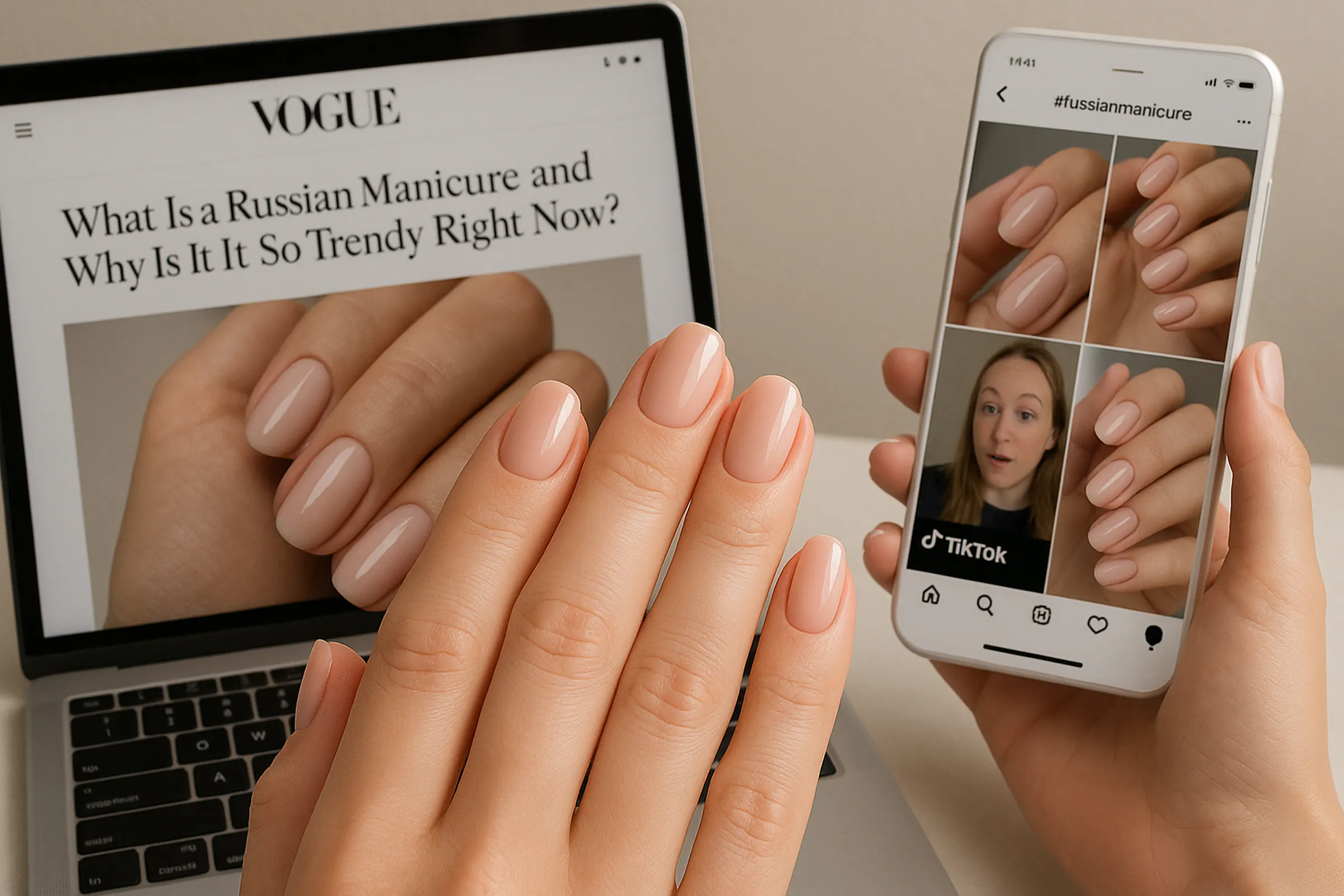
Unique Features of the Russian Manicure Technique
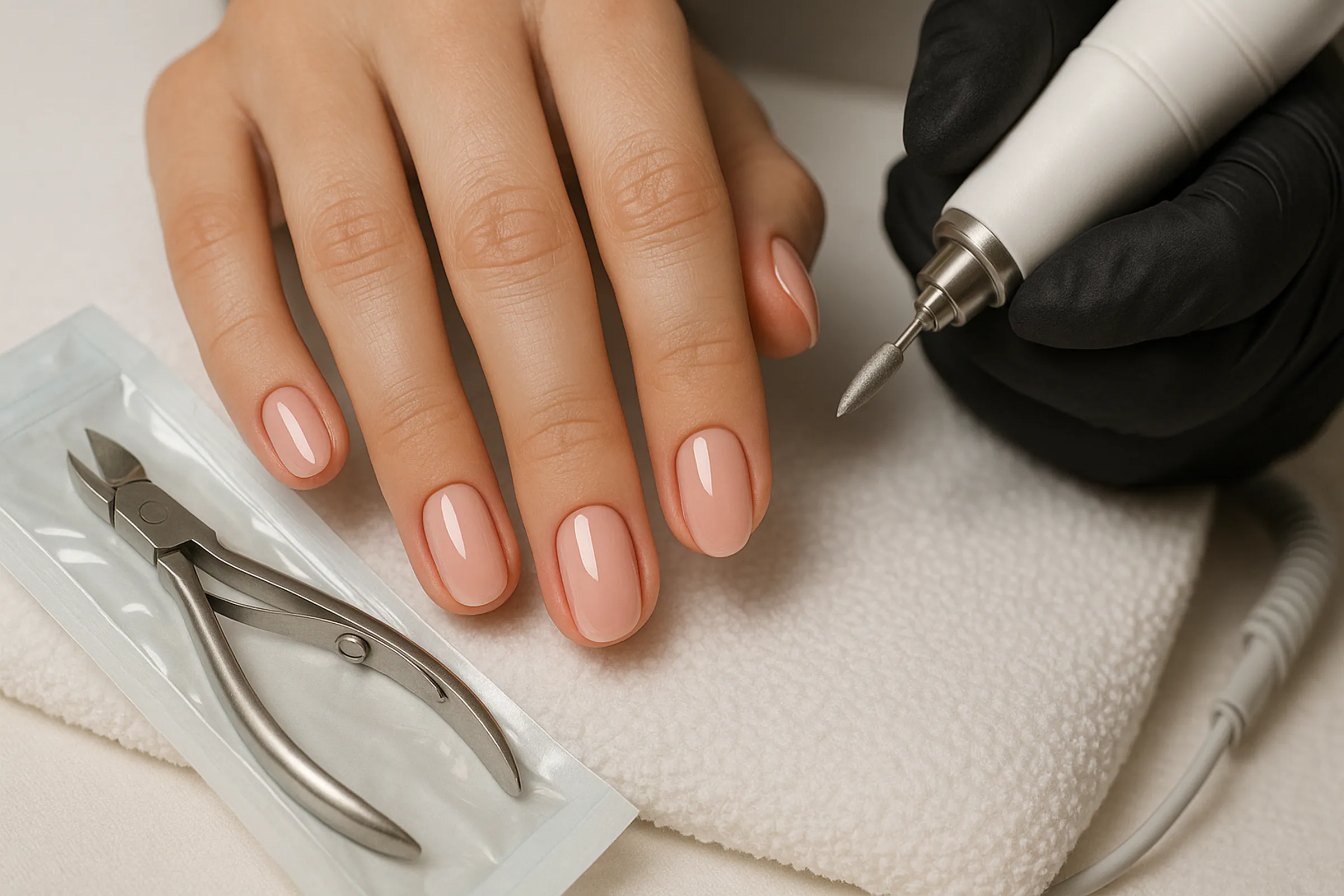
Criterion
Russian Manicure (E-file Cuticle Removal)
European/American Manicure
(Non-Cutting Classic)Japanese Manicure (Asian Care Approach)
Cuticle Treatment
Complete removal of the cuticle and pterygium: with e-file bits and/or sharp nippers, “to zero,” followed by skin buffing[21]. All dry skin around the nail is also removed for cleanliness.
The cuticle is not cut — it is softened with a remover based on acids/oils, then gently pushed back with an orange stick or a pusher [23]. Only the protruding dead skin (hangnails) may be slightly trimmed.
The cuticle is not cut at all; it is only pushed back with a stick (usually made of boxwood) after steaming or softening with natural products [30]. The main focus is on nourishing the nail rather than removing the skin.
Tools
Electric e-file with a set of diamond bits of different shapes and abrasiveness — for skin removal and polishing[8][25]. Additionally, manicure scissors/nippers are used for cutting the cuticle (if necessary) and standard nail files for shaping. The procedure is performed dry, without a soak.
Classic manicure kit: a water bowl for soaking, a pusher for moving back the cuticle, nippers/scissors may be used minimally (many Western technicians avoid them altogether). Emery board files and buffers are used to polish the surface[31]. Gel polish is removed by soaking (foil + acetone) if necessary.
SPA care kit: instead of cutting tools, natural files, polishing blocks made of calfskin, etc. are used. The main “tools” are special pastes and powders with beeswax, minerals, algae, and vitamins, which are rubbed into the nail for strength and shine[32][30]. The procedure includes a hand massage, thorough skin care, but without nail polish (or it ends with the application of a transparent formula).
Execution Time
Medium: about 1–1.5 hours for a manicure (even more if the design is complex)[29]. he nail technician pays attention to every detail, so it is impossible to do a “Russian” manicure quicklyо[33][34].
Fast: about 30–60 minutes for a standard procedure. In typical US salons, manicure is done in a streamlined way and performed superficially in a short time[16]. It is convenient, but the quality suffers.
Medium: about 1 hour, a significant part of which is spent on massage and care. The goal is relaxation and a therapeutic effect. The process is more of a care ritual than “nail repair,” so rushing is inappropriate, but the procedure is not excessively long either.
Aesthetics and Design
Focus on a perfectly clean nail: under-the-cuticle application, even shape, no flaws. Often combined with creative design (hand painting, complex nail art) — Russian nail technicians have been known for the highest level of nail design mastery since the 1990s[35].
Focus on naturalness and speed: the classic “American” manicure often implies a natural look of the nails without bright designs, minimal shaping (for example, soft square or oval), and neutral polish shades. Nail art is usually simple or absent, except for popular variations such as the French manicure[36].
Focus on health and shine: nails after the Japanese technique look naturally pink, smooth, and glossy, as if “by nature.” No colored coating is applied — the emphasis is on improving the nail’s structure. No design as such is performed; instead, the treatment includes care and polishing to a mirror-like shine.
Durability
High: thanks to cuticle removal, polish is applied closer to the nail base, and the manicure looks fresh for up to 3–4 weeks[29]. Отрастает равномерно, без сколов (при использовании гель-лака и правильной техники).
Lower: the non-cut manicure leaves the cuticle, which begins to grow back within a few days and lifts the edge of the coating. Regular polish lasts about 5–7 days, gel polish about 2 weeks; however, because it does not adhere closely to the cuticle, the regrown edge becomes noticeable sooner [37]. More frequent maintenance is required to keep the perfect look.
Medium: after Japanese manicure, there is no decorative coating, so nothing can peel off. The effect of well-groomed nails lasts about 2–3 weeks, until the polishing compounds wear off and new cuticle appears. Regular repeated care is required to maintain shine and nourishment.
Quality and Safety: Why Russian Manicure Is Valued
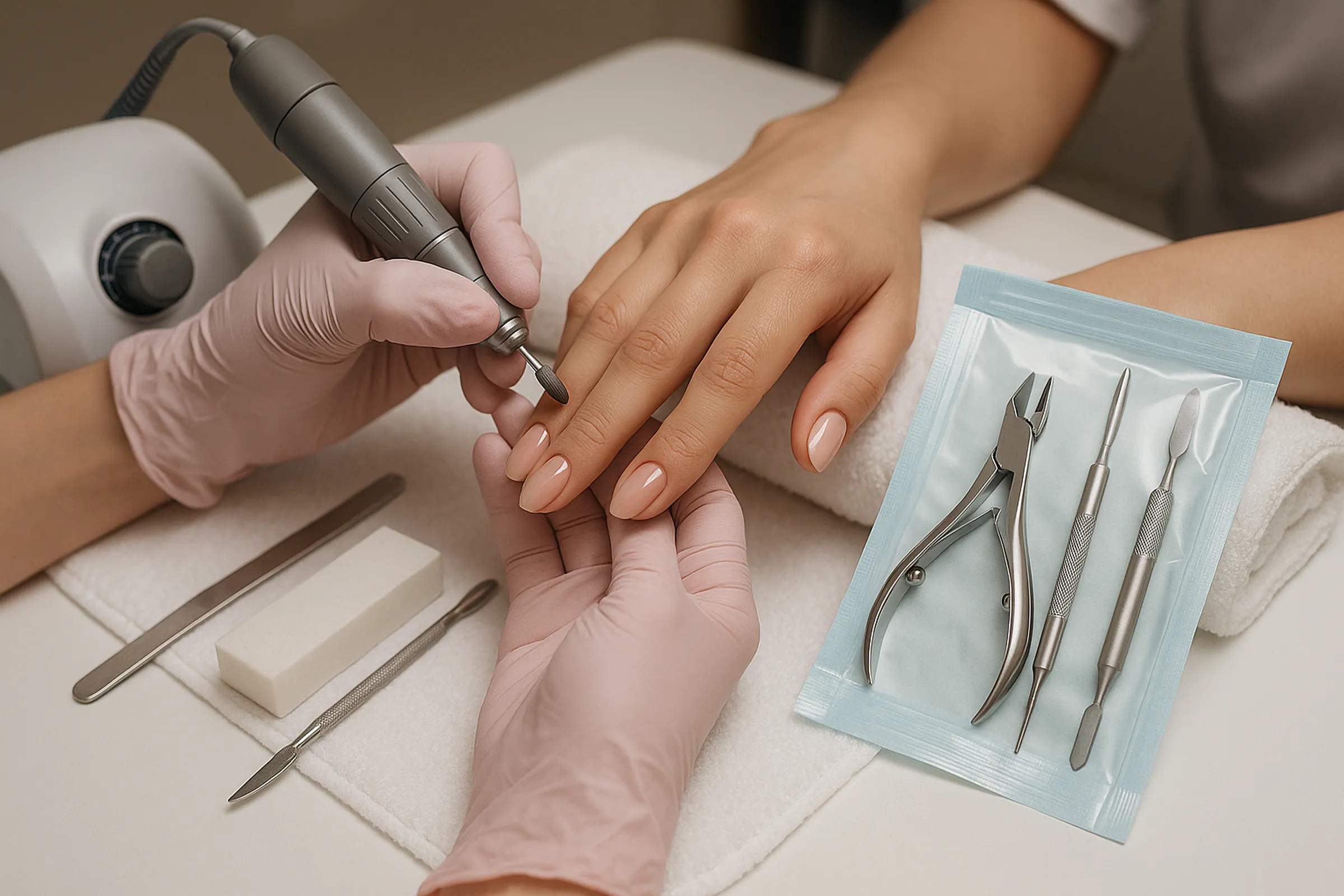
Factor
Russia (domestic market)
USA (Western market)
Europe (Western Europe)
Manicure Culture
Manicure is an important part of the beauty routine, elevated to a care ritual[50][42]. Clients are very demanding: they value perfection and are willing to look for the best technician. Nail technicians strive to offer the highest quality at a reasonable price.
Manicure was long considered simple care. The market is flooded with budget “nail salons,” where the focus is on speed and low price, and quality often suffers[16][54]. Many clients have become accustomed to this level and do not expect better, although there is growing interest in higher-class services.
In most countries, manicure is merely a hygienic procedure, not associated with fashion[53]. Local women often limit themselves to occasional nail trimming and coating, without much sophistication. Colorful designs or complex techniques are rare, and such services are mainly sought by emigrants from the CIS or tourists.
Service and Sterility
Very high standards: sterilization (autoclaves, sealed packets) is strictly observed even in the budget segment[7]. Salons are client-oriented, striving to please and provide comfort — otherwise the client will go to a competitor[55].
Standards vary: there are premium salons with excellent hygiene, and cheap nail studios where sterility is at an average level. In a typical American salon, tools may simply be disinfected without an autoclave, and kraft packets are rarely used.[7]. Client orientation is moderate: many are used to conveyor-style service — “fast and decent.”
Moderate/low: in many European salons they don’t bother much — as expats say, “if you don’t like it, go somewhere else.”[55]. Individual approach is rare, and sterilization is often limited to the basics (tools may simply be wiped with alcohol). In France, for example, finding truly high-quality manicure is a real challenge[11].
Training of Nail Technicians
A developed network of manicure schools and courses; many technicians hold international diplomas and awards[35]. New techniques are mastered and spread quickly. Russian nail technicians are known for their high qualifications and are constantly learning new skills[16].
A state nail technician license is mandatory in all states, but the depth of training varies. Most technicians are immigrants (in the USA, many come from Vietnam and China), and their skill levels differ. Russian manicure is taught in only a few schools; more often, technicians learn it through specialized courses or online lessons[56].
There are few specialized schools, and not many top-level technicians either. Salon positions are often filled by workers without serious training (having only completed a basic course). That is why Russian and Ukrainian nail technicians are valued like gold — their professionalism stands out significantly[11][57]. In major cities (London, Paris), Eastern European nail technicians are emerging with their own clientele.
Price and Value
Wide range: from affordable services to luxury, while the price/quality ratio is high. For about 1,500–3,000 rubles in Russia, you can get a top-level manicure with design. Competition keeps prices reasonable.
Prices vary: a basic manicure may cost $20–30, a salon gel manicure around $40–50. Russian manicure as a premium service is more expensive — usually $70–100, which is justified by the lengthy work and the technician’s skills. Many clients are willing to pay for a month of perfect nails instead of weekly visits.
On average lower than in Russia, but the quality is also lower. For example, a local manicure in the Netherlands costs €15–30, while a good one from a Russian-speaking technician is €100+. Locals are not immediately ready to pay more until they see the difference. But those who have tried a long-lasting, neat manicure often become regular clients and pay the premium price.
Counteraction from Competitors: Bans, Myths, and Regulations

Why Russian Manicure Is the Future: Trends and Prospects
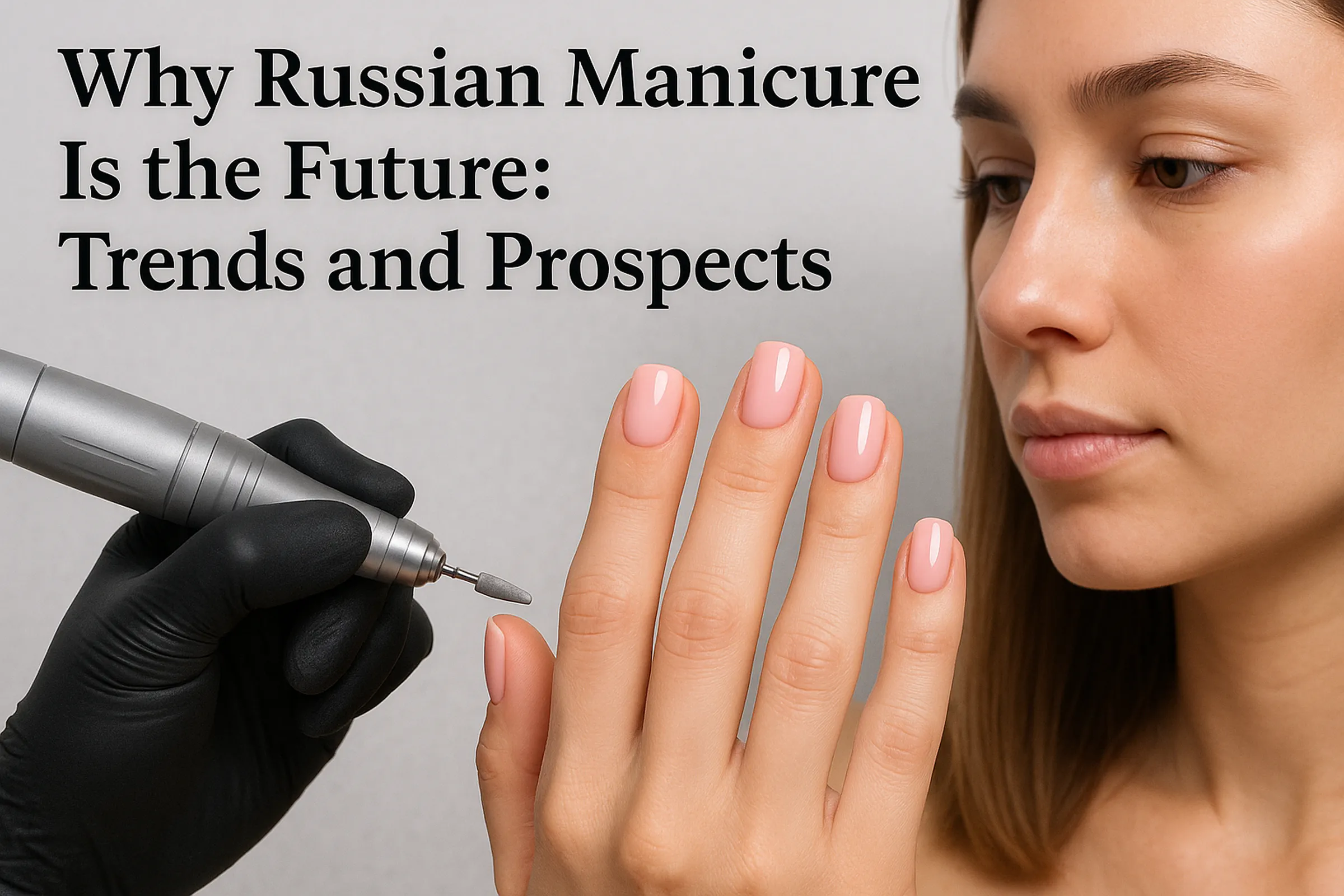
To summarize, here are the key reasons why Russian manicure is the future of nail care:
Our training center follows the best traditions and techniques of Russian manicure education, recognized worldwide. We invite you to learn with us according to Russian quality standards and master the professional skills that have taken the beauty industry by storm.
